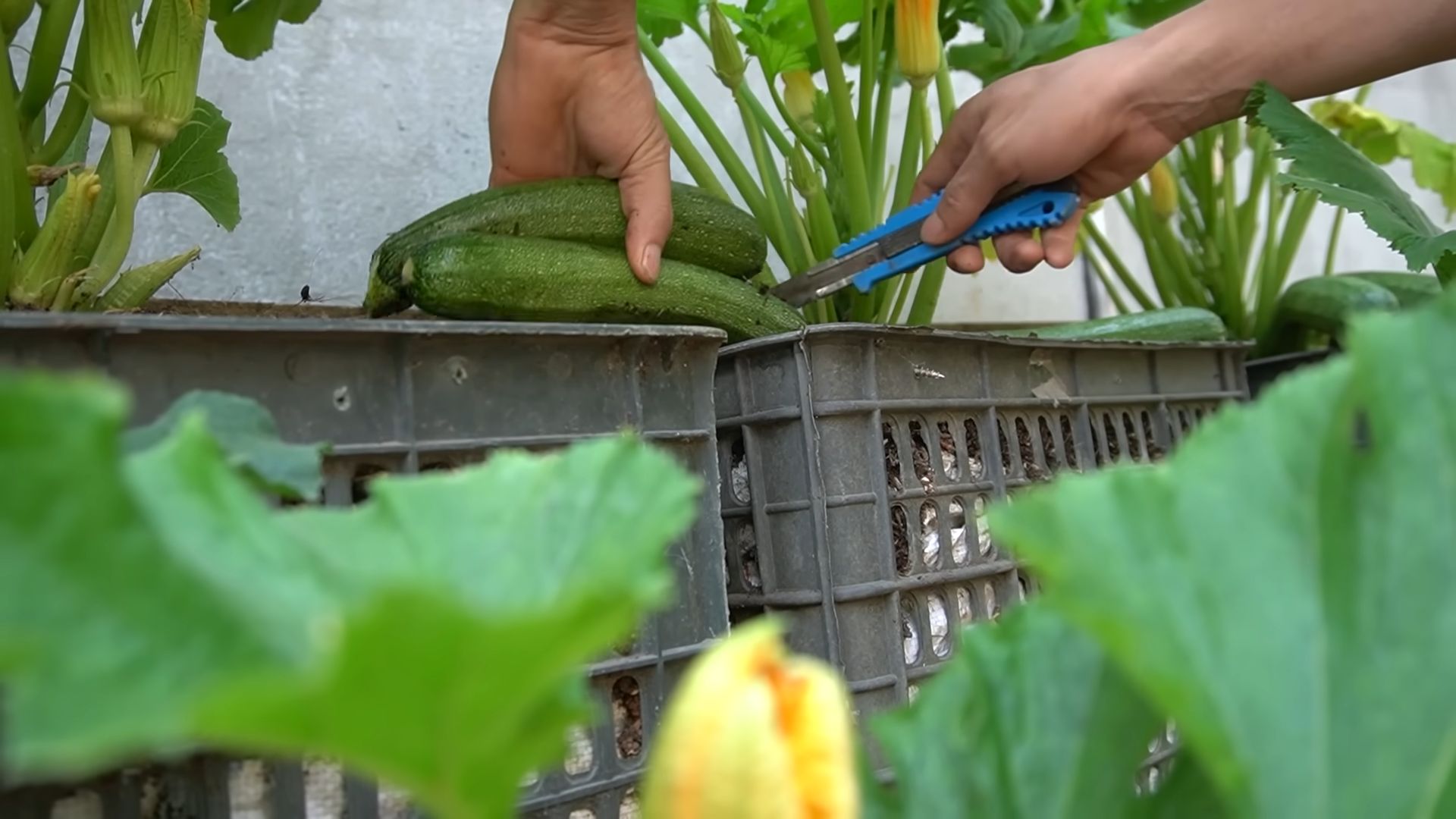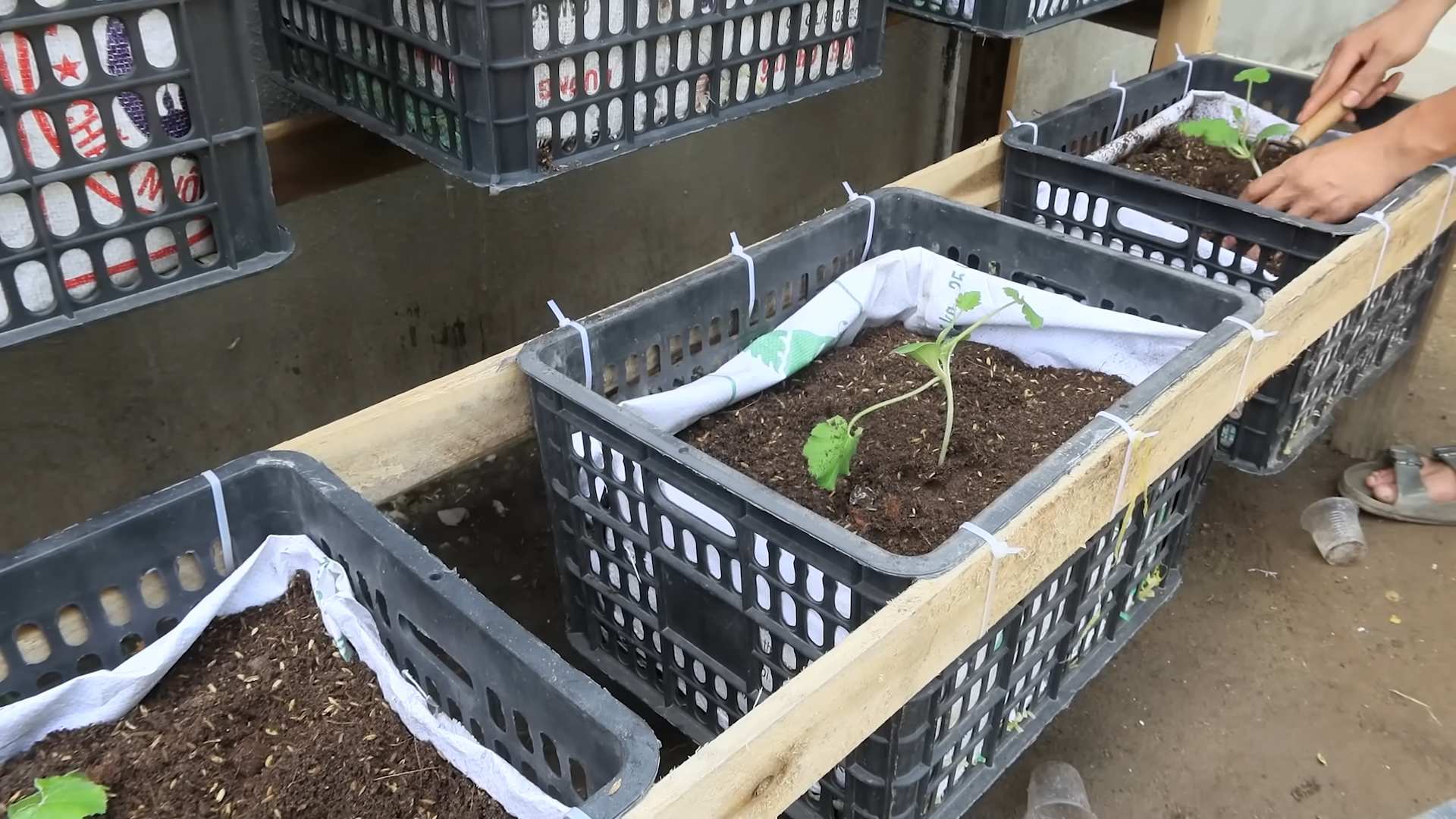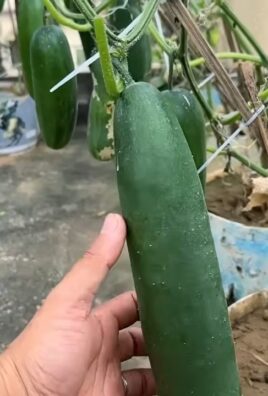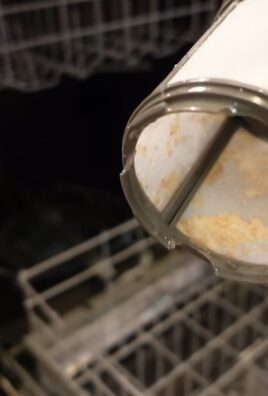Growing Zucchini at Home can seem daunting, but trust me, with a few simple tricks, you’ll be harvesting more zucchini than you know what to do with! Have you ever dreamed of stepping into your backyard and picking fresh, vibrant zucchini for a delicious summer meal? Well, dream no more! This article is packed with easy-to-follow DIY hacks that will transform your garden into a zucchini paradise.
Zucchini, a member of the squash family, has a rich history, with its origins tracing back to Central America. While the zucchini we know and love today was developed in Italy, its ancestors were cultivated for centuries by indigenous peoples. Today, zucchini is a staple in gardens worldwide, prized for its versatility and ease of growth. But let’s be honest, sometimes “easy” isn’t always *that* easy, right?
That’s where these DIY tricks come in. Many gardeners struggle with common zucchini issues like powdery mildew, blossom end rot, or simply not getting enough yield. I’ve been there! I’ve spent countless hours researching and experimenting to find the most effective and affordable solutions. These hacks will help you avoid those frustrating problems and maximize your harvest. Plus, growing zucchini at home allows you to control the quality of your food, avoid harmful pesticides, and enjoy the satisfaction of nurturing something from seed to table. So, let’s dive in and unlock the secrets to a bountiful zucchini harvest!

Growing Zucchini at Home: A Beginner’s Guide
Okay, so you want to grow zucchini? Awesome! It’s a fantastic choice for beginner gardeners because it’s relatively easy, prolific (seriously, get ready for a LOT of zucchini!), and super versatile in the kitchen. I’m going to walk you through everything you need to know, from seed to harvest. Let’s get started!
Choosing Your Zucchini Variety
First things first, let’s talk zucchini varieties. While the classic dark green zucchini is a staple, there are tons of other options out there!
* Black Beauty: This is your classic, reliable dark green zucchini. It’s known for its high yields and good flavor.
* Golden Zucchini: A bright yellow variety that adds a pop of color to your garden and plate. The taste is similar to green zucchini.
* Costata Romanesco: This Italian heirloom variety has distinctive ridges and a slightly nutty flavor.
* Round Zucchini (Eight Ball, One Ball): These are adorable round zucchini that are perfect for stuffing.
* Patio Bush Hybrid: If you’re short on space, this compact variety is ideal for containers.
I personally love growing Black Beauty and Golden Zucchini for the variety they bring to my meals. Consider what you want to do with your zucchini and choose accordingly!
Getting Started: Seeds vs. Seedlings
You have two main options for starting your zucchini: seeds or seedlings.
* Seeds: Starting from seed is generally cheaper and gives you more variety options. However, it requires a bit more patience and attention.
* Seedlings: Buying seedlings from a nursery is a quicker way to get started, but you’ll have fewer variety choices and it will be more expensive.
I usually start my zucchini from seed indoors about 3-4 weeks before the last expected frost. This gives them a head start and ensures I get a harvest sooner.
Planting Your Zucchini
Okay, now for the fun part: planting! Zucchini are warm-weather plants, so you need to make sure the soil is warm enough before planting.
* Timing: Wait until the danger of frost has passed and the soil temperature is consistently above 60°F (15°C).
* Location: Choose a sunny spot that gets at least 6-8 hours of direct sunlight per day. Zucchini are sun-worshippers!
* Soil: Zucchini prefer well-drained, fertile soil that is rich in organic matter. Amend your soil with compost or well-rotted manure before planting.
* Spacing: Give your zucchini plants plenty of room to grow. Space them 2-3 feet apart in rows that are 3-4 feet apart. These plants get BIG!
Step-by-Step Planting Instructions (Seeds):
1. Prepare your seed starting trays or pots: Fill them with a good quality seed starting mix.
2. Sow the seeds: Plant the seeds about 1 inch deep. I usually plant two seeds per cell or pot, just in case one doesn’t germinate.
3. Water gently: Water the soil gently to moisten it, but don’t overwater.
4. Provide warmth: Keep the seed starting trays in a warm place, ideally around 70-75°F (21-24°C). A heat mat can be helpful.
5. Wait for germination: The seeds should germinate in about 5-10 days.
6. Thin the seedlings: Once the seedlings have emerged and have a couple of true leaves, thin them to one plant per cell or pot. Choose the strongest, healthiest-looking seedling.
7. Harden off the seedlings: Before transplanting the seedlings outdoors, you need to harden them off. This means gradually exposing them to outdoor conditions over a period of about a week. Start by placing them in a sheltered spot for a few hours each day, gradually increasing the amount of time they spend outdoors.
8. Transplant the seedlings: Once the seedlings are hardened off and the weather is warm enough, transplant them into your garden. Dig a hole that is slightly larger than the root ball of the seedling. Gently remove the seedling from its pot and place it in the hole. Backfill with soil and water thoroughly.
Step-by-Step Planting Instructions (Seedlings):
1. Prepare the planting area: Dig a hole that is slightly larger than the root ball of the seedling.
2. Remove the seedling from its pot: Gently loosen the root ball and remove the seedling from its pot.
3. Plant the seedling: Place the seedling in the hole, making sure the top of the root ball is level with the surrounding soil.
4. Backfill with soil: Fill the hole with soil and gently firm it around the base of the plant.
5. Water thoroughly: Water the plant thoroughly to help it settle in.
Caring for Your Zucchini Plants
Once your zucchini plants are in the ground, they’ll need some TLC to thrive.
* Watering: Zucchini need consistent watering, especially during hot, dry weather. Water deeply at the base of the plant, avoiding getting the leaves wet, which can lead to fungal diseases. I usually water my zucchini plants every 2-3 days, or more often if the soil is dry to the touch.
* Fertilizing: Zucchini are heavy feeders, so they benefit from regular fertilization. Use a balanced fertilizer or a fertilizer specifically formulated for vegetables. I like to use a liquid fertilizer every 2-3 weeks.
* Mulching: Mulching around your zucchini plants helps to retain moisture, suppress weeds, and regulate soil temperature. Use organic mulch such as straw, wood chips, or shredded leaves.
* Pest Control: Zucchini can be susceptible to pests such as squash bugs, squash vine borers, and aphids. Inspect your plants regularly for signs of pests and take action promptly. I use organic pest control methods such as hand-picking pests, using insecticidal soap, or introducing beneficial insects.
* Pollination: Zucchini plants have separate male and female flowers. The female flowers need to be pollinated in order to produce fruit. If you’re not seeing any fruit develop, you may need to hand-pollinate the flowers. To do this, use a small paintbrush to transfer pollen from the male flower to the female flower.
Dealing with Common Zucchini Problems
Even with the best care, you might encounter some problems with your zucchini plants. Here are a few common issues and how to deal with them:
* Powdery Mildew: This fungal disease appears as a white, powdery coating on the leaves. To prevent powdery mildew, provide good air circulation, avoid overhead watering, and use a fungicide if necessary.
* Squash Vine Borers: These pests bore into the stems of zucchini plants, causing them to wilt and die. To prevent squash vine borers, wrap the stems of your plants with aluminum foil or netting. You can also inject Bacillus thuringiensis (Bt) into the stems to kill the borers.
* Squash Bugs: These pests suck the sap from zucchini leaves, causing them to turn yellow and brown. To control squash bugs, hand-pick them off the plants or use insecticidal soap.
* Blossom End Rot: This condition causes the blossom end of the zucchini to rot. It’s usually caused by a calcium deficiency or inconsistent watering. To prevent blossom end rot, amend your soil with calcium and water your plants consistently.
Harvesting Your Zucchini
Now for the best part: harvesting! Zucchini grow quickly, so you’ll need to check your plants regularly.
* When to Harvest: Harvest your zucchini when they are young and tender, typically when they are 6-8 inches long. Larger zucchini can be tough and seedy.
* How to Harvest: Use a sharp knife or pruning shears to cut the zucchini from the plant. Be careful not to damage the plant.
* Frequency of Harvest: Harvest your zucchini frequently to encourage the plant to produce more fruit. If you leave the zucchini on the plant for too long, it will stop producing new fruit.
I usually harvest my zucchini every 2-3 days during peak season. You’ll be amazed at how much zucchini one plant can produce!
Using Your Zucchini
Okay, so you’ve got a mountain of zucchini. Now what? The possibilities are endless!
* Grilled Zucchini: Slice the zucchini lengthwise, brush with olive oil, and grill until tender.
* Zucchini Bread: A classic way to use up lots of zucchini.
* Zucchini Noodles (Zoodles): Use a spiralizer to turn zucchini into noodles.
* Stuffed Zucchini: Hollow out the zucchini and fill with a mixture of ground meat, rice, and vegetables.
* Zucchini Fritters: Grate the zucchini and mix with flour, eggs, and seasonings. Fry until golden brown.
*

Conclusion
So, there you have it! Growing zucchini at home is not only surprisingly simple, but it’s also incredibly rewarding. Imagine stepping out into your garden and harvesting fresh, vibrant zucchini whenever you need it. No more trips to the grocery store, no more wondering about the freshness of your produce, and definitely no more paying exorbitant prices for something you can easily cultivate yourself.
This DIY approach to growing zucchini offers a multitude of benefits. You control the entire process, from the soil composition to the watering schedule, ensuring that your zucchini are grown organically and free from harmful pesticides. Plus, the taste of homegrown zucchini is simply unmatched. It’s sweeter, more flavorful, and bursting with freshness that you just can’t find in store-bought varieties.
But the advantages don’t stop there. Growing your own zucchini is also a fantastic way to reduce your carbon footprint. By eliminating the transportation and packaging associated with commercially grown produce, you’re making a conscious effort to live a more sustainable lifestyle. And let’s not forget the therapeutic benefits of gardening. Spending time outdoors, connecting with nature, and nurturing your plants can be incredibly calming and stress-relieving.
Ready to take your zucchini growing to the next level? Consider experimenting with different varieties. From the classic Black Beauty to the golden-hued Gold Rush, there’s a zucchini variety to suit every taste and preference. You can also try companion planting to enhance the growth and flavor of your zucchini. Marigolds, for example, are known to deter pests, while basil can improve the overall health of your plants.
Another fun variation is to grow your zucchini vertically using a trellis or cage. This not only saves space but also improves air circulation, reducing the risk of fungal diseases. And if you find yourself with an abundance of zucchini (which is highly likely!), don’t worry. There are countless ways to use them, from zucchini bread and fritters to grilled zucchini salads and stuffed zucchini boats.
We wholeheartedly encourage you to give this DIY trick a try. It’s a fun, educational, and ultimately delicious experience that will transform the way you think about zucchini. Don’t be intimidated if you’re a beginner gardener. Zucchini are incredibly forgiving plants, and with a little bit of care and attention, you’ll be harvesting a bountiful crop in no time.
And most importantly, we want to hear about your experiences! Share your tips, tricks, and photos with us in the comments below. Let us know what varieties you’re growing, what challenges you’ve faced, and what delicious recipes you’ve created. Together, we can build a community of zucchini enthusiasts and inspire others to embrace the joys of homegrown produce. So, grab your seeds, get your hands dirty, and get ready to enjoy the freshest, most flavorful zucchini you’ve ever tasted. Happy gardening!
Frequently Asked Questions (FAQ)
What is the best time to plant zucchini?
The ideal time to plant zucchini is after the last frost, when the soil has warmed up to at least 60°F (15°C). Zucchini are sensitive to cold temperatures, so planting too early can stunt their growth or even kill them. In most regions, this typically falls between late spring and early summer. You can start seeds indoors 3-4 weeks before the last expected frost to get a head start, but be sure to harden them off before transplanting them outdoors.
How much sunlight do zucchini plants need?
Zucchini plants thrive in full sun, requiring at least 6-8 hours of direct sunlight per day. Insufficient sunlight can lead to weak growth, reduced fruit production, and increased susceptibility to diseases. Choose a planting location that receives ample sunlight throughout the day. If you live in a particularly hot climate, some afternoon shade can be beneficial to prevent the plants from overheating.
What kind of soil is best for growing zucchini?
Zucchini plants prefer well-drained, fertile soil that is rich in organic matter. Amend your soil with compost, aged manure, or other organic materials before planting to improve its drainage, fertility, and water-holding capacity. The ideal soil pH for zucchini is between 6.0 and 7.5. You can test your soil pH using a home testing kit or by sending a sample to your local agricultural extension office.
How often should I water my zucchini plants?
Zucchini plants need consistent moisture, especially during hot, dry weather. Water deeply and regularly, aiming to keep the soil consistently moist but not waterlogged. Water at the base of the plants to avoid wetting the foliage, which can increase the risk of fungal diseases. A good rule of thumb is to water when the top inch of soil feels dry to the touch. Mulching around the plants can help retain moisture and suppress weeds.
How do I deal with pests and diseases on my zucchini plants?
Zucchini plants can be susceptible to various pests and diseases, including squash bugs, squash vine borers, powdery mildew, and blossom end rot. Regularly inspect your plants for signs of pests or diseases and take action promptly. Handpick pests, use insecticidal soap or neem oil for infestations, and apply fungicides for fungal diseases. Ensure good air circulation around the plants to prevent fungal problems. Blossom end rot is often caused by calcium deficiency or inconsistent watering, so amend your soil with calcium and maintain consistent moisture levels.
When is the best time to harvest zucchini?
Zucchini are best harvested when they are young and tender, typically when they are 6-8 inches long. Overripe zucchini can become tough and seedy. Harvest regularly to encourage continued fruit production. Use a sharp knife or pruning shears to cut the zucchini from the plant, leaving a short stem attached.
Why are my zucchini flowers falling off without producing fruit?
This is a common problem called blossom drop, and it’s often caused by a lack of pollination. Zucchini plants have separate male and female flowers, and pollination is required for the female flowers to develop into fruit. Factors that can contribute to poor pollination include lack of pollinators (bees, butterflies, etc.), high temperatures, and excessive nitrogen fertilization. You can hand-pollinate your zucchini flowers by transferring pollen from the male flowers to the female flowers using a small brush or cotton swab.
Can I eat zucchini blossoms?
Yes, zucchini blossoms are edible and delicious! They can be stuffed, fried, or added to salads and soups. Harvest the blossoms in the morning, when they are fresh and open. Choose male blossoms to avoid reducing fruit production. Gently rinse the blossoms and remove the pistil or stamen before cooking.
How do I store zucchini?
Store zucchini in the refrigerator in a plastic bag or container. They will typically last for 1-2 weeks. Avoid storing zucchini near ethylene-producing fruits like apples and bananas, as this can cause them to ripen and spoil more quickly. You can also freeze zucchini for longer storage. Shred or slice the zucchini, blanch it in boiling water for a few minutes, and then freeze it in freezer bags or containers.
What are some creative ways to use zucchini?
Besides the classic zucchini bread and fritters, there are countless ways to use zucchini. Try grilling or roasting zucchini slices, adding them to salads or stir-fries, making zucchini noodles (zoodles), or stuffing them with rice, vegetables, and meat. You can also use zucchini to make soups, sauces, and even desserts. Get creative and experiment with different flavors and textures to discover your favorite zucchini recipes. Remember, growing zucchini at home opens a world of culinary possibilities!




Leave a Comment